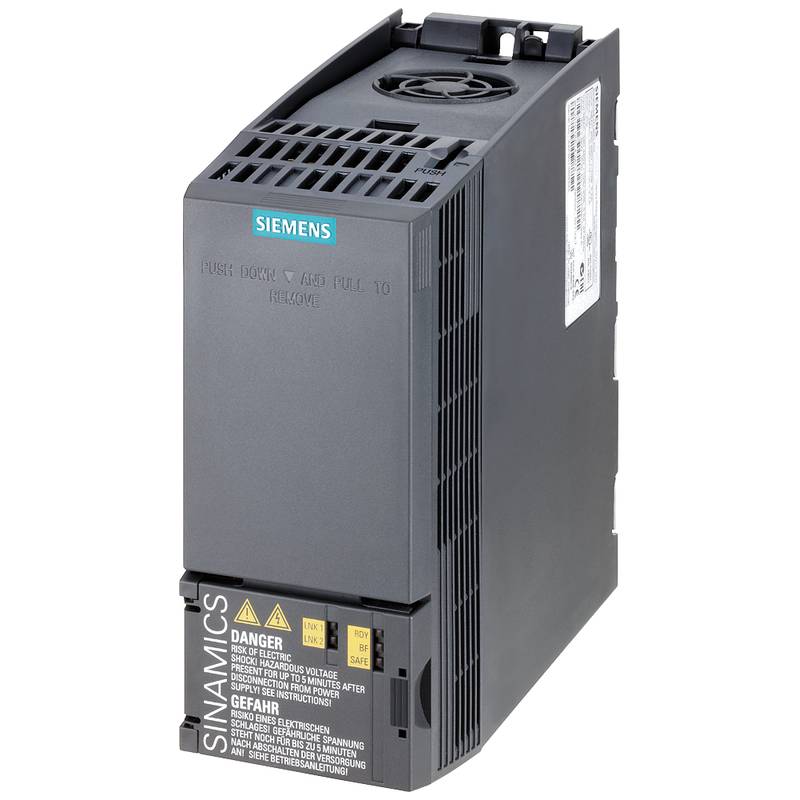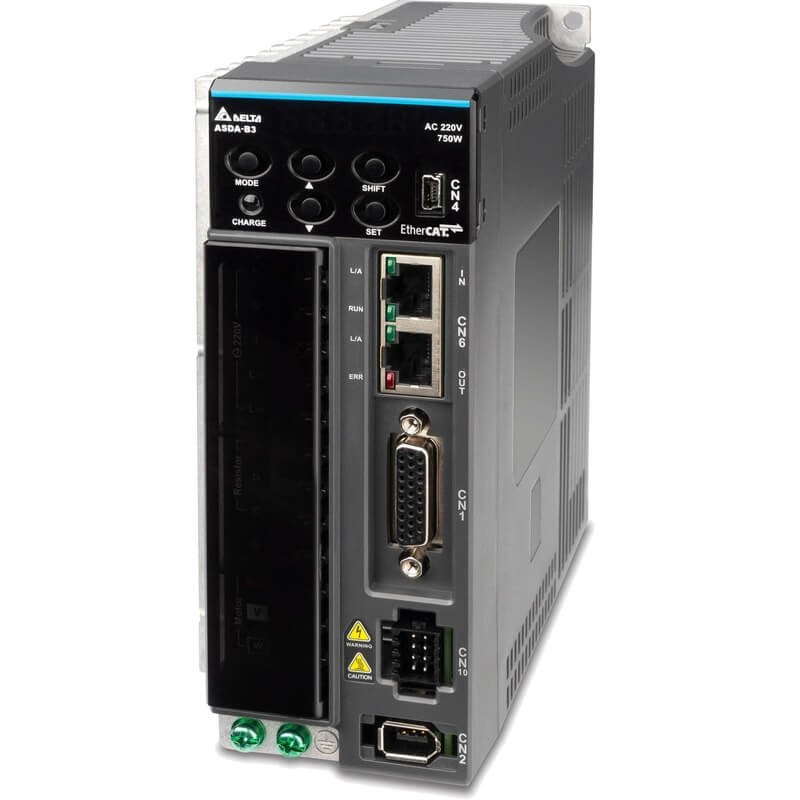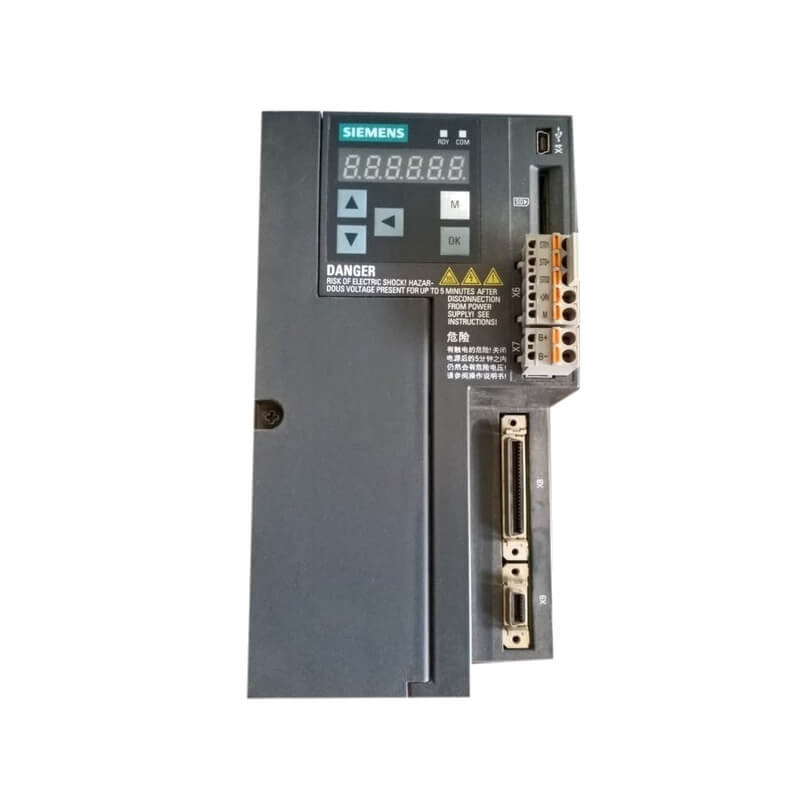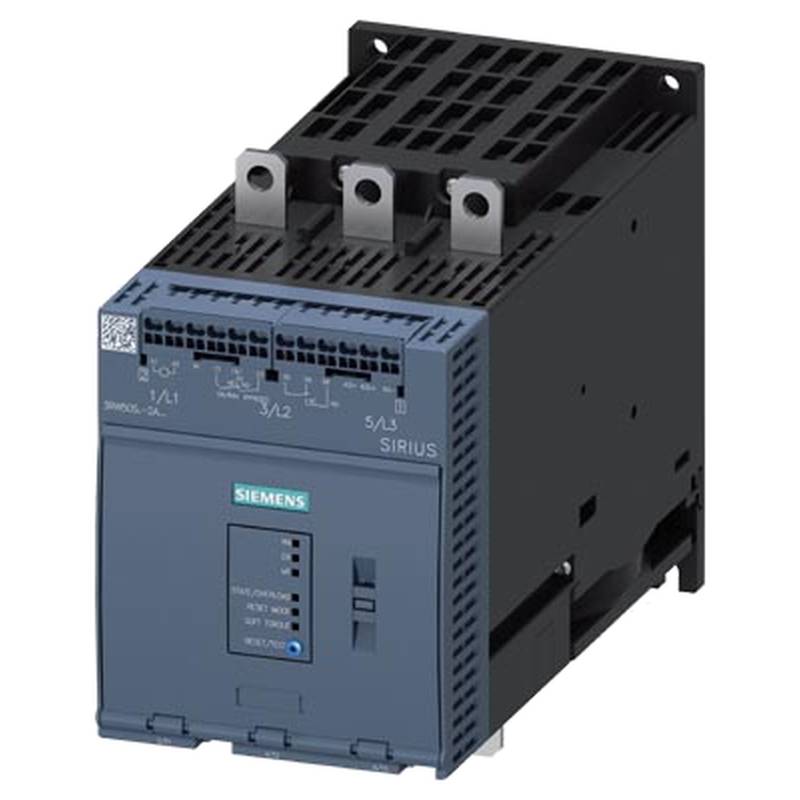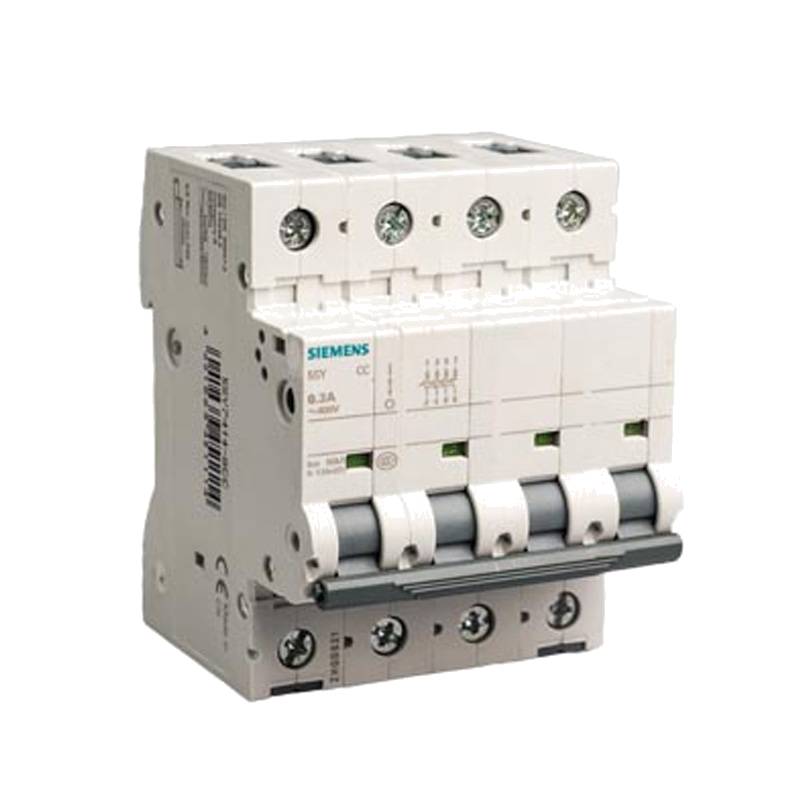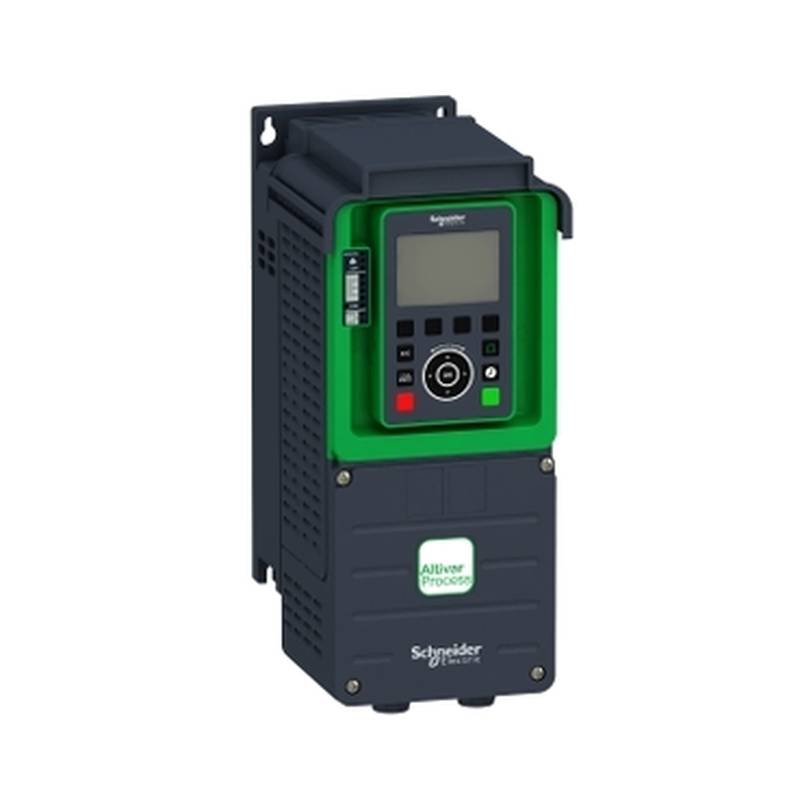
The Siemens 6SL3210-1KE15-8UF2, a Sinamics G120 general-purpose frequency converter, delivers robust performance and energy efficiency for a wide array of industrial applications. This drive unit is engineered for precision control, offering a power output of 2.2 kW and a maximum current rating of 5.6 A. Its key advantages lie in its modular design, advanced diagnostics, and seamless integration capabilities within automation systems. The Sinamics G120 platform is renowned for its flexibility, allowing users to tailor configurations to specific machine requirements, thereby optimizing operational efficiency and reducing energy consumption.
Siemens 6SL3210-1KE15-8UF2: Product Specifications
| Parameter | Specification |
| :----------------------------- | :--------------------------------------------- |
| Product Number | 6SL3210-1KE15-8UF2 |
| Series | Sinamics G120 |
| Type | General Purpose Frequency Converter |
| Rated Output Power (kW) | 2.2 |
| Rated Output Current (A) | 5.6 |
| Input Voltage | 380-480 V AC, 3-phase |
| Output Frequency | 0-600 Hz |
| Protection Class | IP20 |
| Dimensions (H x W x D) | Varies by Control Unit and Power Module |
| Operating Temperature | -10°C to +50°C (derating may apply) |
| Communication Interfaces | PROFINET, PROFIBUS, EtherNet/IP (optional) |
| Braking | Integrated braking chopper |
Core Features & Market Positioning
The Siemens 6SL3210-1KE15-8UF2 distinguishes itself through its sophisticated control algorithms, enabling precise speed and torque regulation essential for demanding industrial processes. Its modular architecture, consisting of a Control Unit (CU) and a Power Module (PM), allows for easy customization and replacement of components, minimizing downtime and maintenance costs. This flexibility positions the Sinamics G120 series as a highly adaptable solution capable of meeting diverse application needs, from simple fan and pump control to complex machinery requiring dynamic response. The drive's integrated safety functions, such as Safe Torque Off (STO), further enhance its value proposition by contributing to overall system safety and compliance with stringent industry standards. Furthermore, its advanced diagnostic capabilities provide real-time insights into operational status, facilitating proactive maintenance and troubleshooting.
Key Application Scenarios
The Siemens 6SL3210-1KE15-8UF2 finds extensive application across various sectors, including manufacturing, material handling, and process automation. It is particularly well-suited for controlling pumps, fans, compressors, conveyors, and machine tools where precise speed control and energy savings are paramount. In packaging machinery, it ensures consistent product throughput and accuracy. For textile manufacturing, its ability to manage motor speed with high precision is critical. In the automotive industry, it supports assembly line automation and robotic operations. The drive's versatility also extends to water and wastewater treatment plants for pump speed regulation and building automation for HVAC systems. Its robust design ensures reliable operation even in challenging industrial environments.
Practical System Integration Guidance
Integrating the Siemens 6SL3210-1KE15-8UF2 into an existing automation system typically involves connecting the Power Module (PM) and Control Unit (CU), followed by proper wiring of power and control circuits. The power module requires direct connection to the main power supply, while the control unit handles communication and parameterization. Configuration is commonly performed using Siemens' TIA Portal software, allowing for detailed setting of motor parameters, control modes, and communication protocols. Ensure that the motor is correctly matched to the drive's power and current ratings. For communication, standard Ethernet cables can be used for PROFINET or EtherNet/IP, depending on the chosen communication module. Always consult the specific manual for the CU and PM being used for detailed wiring diagrams and configuration steps.
Operation and Risk Mitigation
Safe operation of the Siemens 6SL3210-1KE15-8UF2 necessitates adherence to installation and operating guidelines outlined in the product manuals. Before powering on, verify all electrical connections and ensure proper grounding to prevent electrical hazards. During commissioning, carefully set motor parameters, overload protection, and speed limits to avoid overstressing the motor or driven equipment. Familiarize yourself with common fault codes, such as F0001 (overcurrent) or F0002 (overvoltage), which can indicate potential issues requiring immediate attention. Implement the integrated safety functions, like STO, to ensure safe stopping in emergency situations, thereby mitigating risks associated with unexpected motor movement. Regular inspection of connections and environmental conditions is also crucial for preventing operational disruptions.
Scalability & Long-Term Value
The Sinamics G120 platform, including the 6SL3210-1KE15-8UF2, offers significant scalability and long-term value. Its modular design allows for future upgrades or modifications by simply swapping control units or power modules, accommodating evolving application requirements without replacing the entire drive system. Compatibility with various communication protocols like PROFINET and PROFIBUS ensures seamless integration with Siemens' broader automation ecosystem, including PLCs like the SIMATIC S7 series. For embracing Industry 4.0 initiatives, the Sinamics G120 can be integrated with IIoT platforms, enabling advanced data analytics, predictive maintenance, and remote monitoring capabilities. This adaptability ensures the drive remains a relevant and efficient component of automated systems for years to come.
Frequently Asked Questions
What is the primary function of the Siemens 6SL3210-1KE15-8UF2?
This device functions as a variable frequency drive. It precisely controls motor speed and torque. It's designed for general industrial use.
It enables significant energy savings. This is achieved by matching motor speed to load demands. This converter enhances process efficiency.
It provides advanced motor protection features. It also offers robust communication capabilities. This ensures integration into automation networks.
How do I connect the Siemens 6SL3210-1KE15-8UF2 to a motor?
Connect motor power cables to the drive's output terminals. Ensure correct phase sequencing for three-phase motors. Always verify the motor's nameplate details.
Use appropriate cable types and sizes. Follow torque specifications for terminal connections. Consult the drive's manual for specific wiring diagrams.
Ensure proper grounding of both the drive and the motor. This is critical for safety and performance. Improper grounding can lead to system instability.
What are the main advantages of the Sinamics G120 series?
Its modular design offers flexibility. You can easily swap control and power units. This simplifies maintenance and upgrades.
It provides advanced control features. This includes precise speed and torque regulation. Integrated safety functions enhance operational safety.
The series boasts excellent energy efficiency. It offers robust diagnostics for troubleshooting. It integrates well with various automation systems.
Can the Siemens 6SL3210-1KE15-8UF2 be used for high-speed applications?
The drive supports a wide output frequency range. This often extends up to 600 Hz. Check the specific product manual for exact limits.
High-speed operation may require special motor considerations. Ensure the motor is rated for the intended speeds. Cooling may also be a factor at high RPMs.
Proper parameterization is essential for stability. Consult the drive's advanced settings for high-frequency operation.
What communication protocols does this drive support?
It supports standard industrial protocols. Common options include PROFINET and PROFIBUS. EtherNet/IP is also often available.
The specific protocol depends on the installed communication module. Ensure you select the correct CU and communication option. This allows seamless network integration.
Verify protocol compatibility with your PLC. TIA Portal software is used for configuration. This ensures robust data exchange.
How do I perform basic parameterization for the 6SL3210-1KE15-8UF2?
Use Siemens TIA Portal for configuration. Connect the drive to your PC via USB or Ethernet. Load a standard parameter set for your motor type.
Configure essential motor data. This includes rated power, voltage, and current. Set the desired control mode, like V/f or sensorless vector.
Perform a motor auto-tuning procedure. This optimizes drive performance for the connected motor. Save the parameters after successful tuning.
What safety features are integrated into the Sinamics G120?
A key safety feature is STO (Safe Torque Off). This prevents unexpected motor start-ups. It ensures personnel safety during maintenance.
Other safety functions may be available. These can include Safe Stop 1 (SS1) and Safely Limited Speed (SLS). These depend on the specific Control Unit used.
Always adhere to safety standards for implementation. Ensure proper wiring and configuration of safety circuits.
What causes an F0001 fault code on this drive?
The F0001 fault typically indicates an overcurrent condition. This happens when the motor draws more current than the drive can supply. Check for motor short circuits.
Investigate mechanical overload on the motor. Ensure the motor's load is within the drive's rating. Verify motor and drive parameters are correctly set.
Possible issues include motor winding faults. Also consider external short circuits. Inspect all power connections carefully.
Is the Siemens 6SL3210-1KE15-8UF2 suitable for harsh environments?
The standard IP20 rating means it needs protection. It's not designed for direct exposure to dust or liquids. Install it in a control cabinet.
Ensure adequate ventilation within the cabinet. Maintain operating temperatures within specified limits. Consider environmental factors for long-term reliability.
Harsh environments may require specialized enclosures. Consult Siemens documentation for suitable solutions.
How can I improve energy efficiency with this frequency converter?
Match motor speed to the actual process demand. Avoid running motors at full speed unnecessarily. This is the primary benefit of VFDs.
Utilize the drive's energy-saving functions. These can include optimized flux settings. Implement soft start and stop features.
Monitor energy consumption data. Analyze usage patterns to identify further optimization opportunities.














